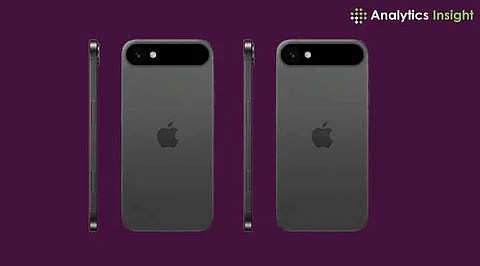

Apple has always been at the forefront of smartphone technology, and the recent hush-hush is mostly about the iPhone 17 Air concept. This will likely set a new world record as the thinnest iPhone ever. Although only a concept as of now, it has piqued interest among technology users who want to know how Apple can innovate more in terms of thinness without sacrificing usability. Let us know what this concept could be about and how it might affect the future.
Apple has prioritized thin, minimalist designs for years, and the iPhone 17 Air concept takes this to an extreme. Speculation and renderings indicate a phone that may be as thin as 5 mm, much thinner than recent models such as the iPhone 15 Pro, which is 8.25 mm thick. This thinness pursuit isn't new—Apple has been on a trend of thinning out devices, as with the iPod and previous iPhone generations—but the iPhone 17 Air may be the one to break the mold.
A slimmer phone means reconsidering every part. The iPhone 17 Air idea is envisioned with an edge-to-edge OLED screen and cutting bezels for a clean aesthetic. Physical buttons are also rumored out, with haptic sensors replacing the volume and power buttons, yet another way of simplifying design. It would be like a nod to Apple's design patterns seen elsewhere in devices like the Force Touch trackpad in MacBooks.
Materials can use the strength of the addition of lightweight titanium alongside glass-backed support and still retain their strength, just like their slim new build. Yet, with this new slim form, concerns remain about how it will hold structurally. Will it resist the abuses of normal handling?
One of the biggest hurdles in creating an ultra-thin phone is battery capacity. A slimmer device means less space for a battery, potentially impacting runtime. To address this, Apple might leverage advanced battery technology, such as solid-state batteries, which offer higher energy density in a smaller footprint. Alternatively, the iPhone 17 Air could rely on more efficient chips, like a hypothetical A19 Bionic, to optimize power usage.
Performance is also a factor. Apple's in-house silicon has always provided industry-leading processing power. Still, packaging high-performance parts into a thinner body might necessitate creative cooling solutions, like vapor chambers or next-generation thermal materials.
The camera is one of the pillars of contemporary iPhones, and the iPhone 17 Air idea would have to reconcile thinness with performance. Like in most recent models, a camera bump that protrudes may not fit with the ultra-slim look. A periscope lens-based flush camera is a potential solution, as it enables optical zooming without the added thickness. Advanced computational photography might also compensate for any hardware limitations so that the iPhone 17 Air does not fall behind.
A slimmer phone is exciting, but at a cost. Ergonomics may suffer—how good would a 5mm-thick phone feel in the hand? Some may consider it too fragile or slippery. Moreover, taking away physical keys and reducing the battery size might necessitate changes in how users handle the device.
Conversely, a slimmer iPhone may increase portability. It would fit easily into compact pockets or small purses, making it attractive to consumers who value convenience and minimalism. The slim form factor could also become a fashion icon, representing Apple's brand identity.
The concept of the iPhone 17 Air demonstrates Apple's dedication to design greatness and innovation. If it materializes, it has the potential to find a niche market that prioritizes portability and aesthetics above other factors. But perhaps it wouldn't supersede the regular lineup of iPhones, instead being a high-end or experimental variant.
This idea also marks Apple's desire to try out new form factors, which could open the door for future rollable or foldable devices. With rivals such as Samsung investigating flexible displays, Apple may apply the iPhone 17 Air to pilot the waters for innovative new designs.
The iPhone 17 Air concept is a thrilling preview of what might be Apple's thinnest phone to date. Though obstacles such as battery life and strength persist, Apple's history indicates it might be able to conquer them through cleverness. Whether or not this concept materializes or stays a design exercise, it highlights Apple's relentless drive to innovate beyond the limits of technology. For the time being, it's a dizzying vision of the future—one that's got fans and critics queuing up in anticipation of what's next.
